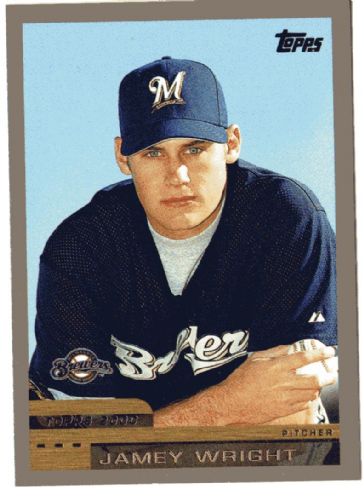If you fire up your old Nintendo 64 gaming console and pop in the cartridge for Ken Griffey Jr. Baseball, you’ll see a young hurler for the Colorado Rockies named Jamey Wright. When the game was released in 1998, Wright had just finished his 2nd season in the bigs. The 21 year old had gone 8-12 with an ERA north of 6.00 in 26 starts.
Wright’s numbers weren’t quite as bad as they appear, however, when you consider the landscape of Major League baseball back when Wright was a youngin. In 1997, Wright’s second year, Andruw Jones was the youngest player in baseball, Ken Griffey Jr. was the unanimous AL MVP when he hit .304 with 56 homers and 147 RBI, Roger Clemens (of the Blue Jays) had the game’s highest WAR, and Livan Hernandez of the World Champion Florida Marlins was the World Series MVP. The Arizona Diamondbacks and Tampa Bay Devil Rays did not yet exist.
If you fire up your iPhone 5s (c?) and command Siri to show you some baseball news, you’ll see that the Los Angeles Dodgers have agreed to terms with a 38 year old journeyman pitcher named Jamey Wright. Remarkably, it’s the same guy.
Wright is now in his 3rd decade of professional baseball at the highest level. He has played 18 full seasons, throwing a pitch in every year since 1996. He has played for 10 teams: the Rockies, Brewers, Cardinals, Royals, Rockies (again), Giants, Rangers, Royals (again), Indians, Mariners, Dodgers, Rays, and now the Dodgers (again).
Over his career, Wright has gone 92-126 with an ERA of 4.82 in 658 appearances. He’s bounced around so much largely because he has been rather ineffective wherever he’s gone. In fact, his ERA- over his career is 104, meaning that he has been 4% WORSE than a league average pitcher since 1996. That’s part of what has made Wright’s career so absurd–he’s managed to stay around for an incredibly long time and play for an incredibly large number of teams, while being incredibly mediocre. In 18 seasons, across both leagues, he’s never made an All-Star team and never received a single vote for any award, major or minor.
It’s possible, however, that Wright is just an extraordinarily late bloomer. His 3 most effective seasons have come in 2007, 2011, and 2013. When he was 32, 36, and 38, respectively. In 2007, while pitching for the Rangers, Wright worked his way up from AA to the Majors, posting a 3.62 ERA and a stellar 78 ERA- for the big club in 20 games, including 9 starts. In 2011, the Mariners were the beneficiaries of 3.16 ERA over 60 games. Last season, Wright posted an impressive 3.06 ERA and an 81 ERA- over 66 games as one of Tampa’s most reliable relievers.
According to Fangraphs, which tracks every pitch thrown since 2007, Wright’s velocity has been pretty consistent over the past few seasons. In fact, it reached its zenith in 2009 when the fastball averaged a tick over 92 mph. Jamey features a sinker/two-seamer that he relies on most heavily, as well as a changeup, a slider, and a straight fastball.
One main reason for Wright’s longevity could be his penchant for keeping the ball in the ballpark. Thanks in large part to that sinker, Wright has done an excellent job limiting home runs in his career. In 2/3 of his 18 seasons, Wright has limited opponents to fewer than 1 homer per 9 innings. In 2012, Wright allowed only 2 homers in 67.2 innings. He has proved valuable as a veteran reliever who can reliably eat innings and avoid giving up the big hit.
(I’d like to take one parenthetical paragraph to clear up a potential misunderstanding: Jamey Wright is not Jaret Wright. For a long long time I confused the two of them, but in fact they are totally different people. Jamey Wright, discussed above, debuted for the Rockies in 1996 and signed with the Dodgers in 2013. Jaret Wright (that’s spelled correctly, I promise), started his career a year later, in 1997, with the Indians and proceeded to have a successful 11 year career with the Indians, Padres, Braves, Yankees, and Orioles that ended in 2007. See, they’re different.)
The next time you watch Jamey Wright pitch, think about the fact that his career started before that of Andruw Jones. Think about the fact that a 25 year old Quinton McCracken was patrolling the outfield behind Wright in 1996, and that a 32 year old Bruce Ruffin led that roster in saves. Think about the fact that President Clinton had yet to take his second oath of office when Jamey Wright broke into the Show. And think about how impressive it is that this guy is still making pitches and–at least at OTBB–headlines.
-Max Frankel
Stat of the Day: Roger Clemens led his league at least once in 17 different statistical categories.

















